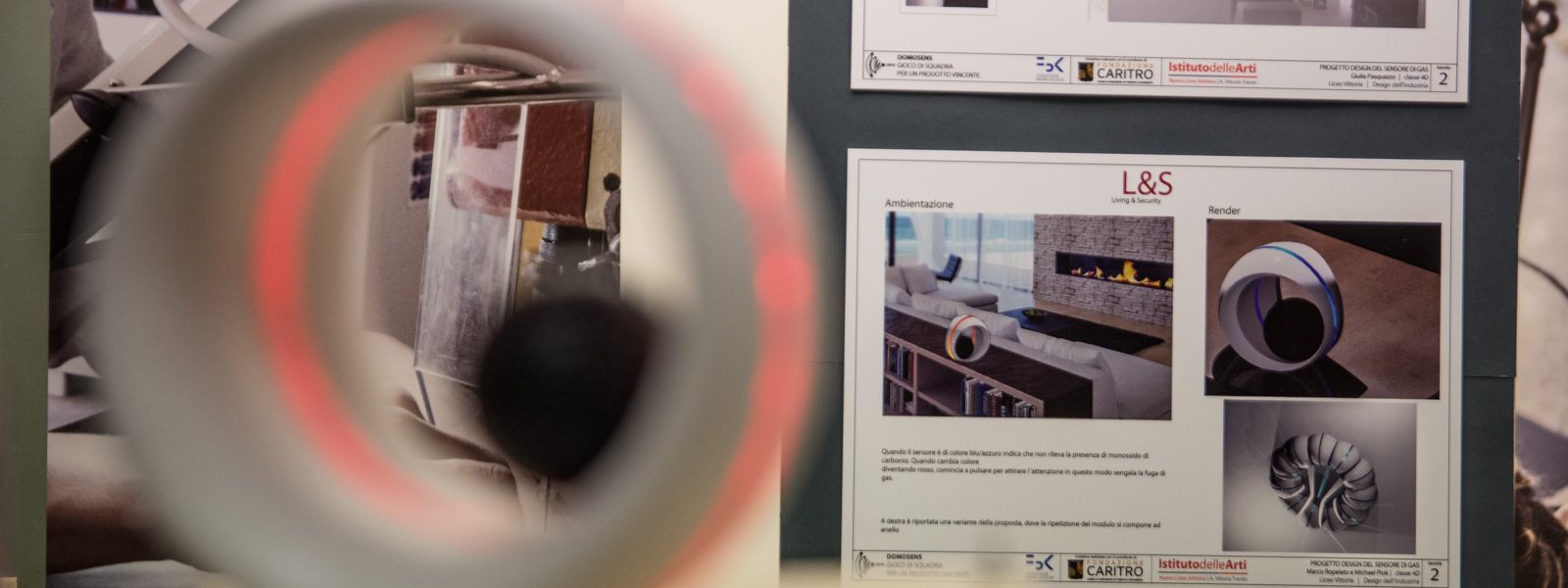FBK for quality Alternanza Scuola-Lavoro training program for high school students: 200 students together for DomoSens

An intense experience of group work and training for the students, an experimentation between the worlds of research and education, a replicable and scalable model of collaboration that opens up interesting prospects for innovation, looking to the future.
All of this was DomoSens, the school-work combination project coordinated by Fondazione Bruno Kessler, which ended in June and gave rise to a second project, SenSAT, started in September together with SAT and the managers of Trentino-based mountain lodges.
Thanks to this project, which was supported by Fondazione CARITRO, the students, during school year 2016-2017, simulated a company production process and created a sensor for monitoring air quality in homes with a professional design that made it a home decor accessory. The course involved a community of over 250 high school students from Trentino who actively participated in all the operational phases, accompanied by their teachers and by a working group from FBK.
Nothing had been left to chance and the participants worked on the various aspects of product development, which included the research phase, the legislative field, market analysis, design, logo, prototyping and user manual.
The prototype created with DomoSens
During the project, an innovative gas detector was created thanks to the most recent results of scientific and technological research in the sector. The device is designed to monitor air in homes, with particular regard to carbon monoxide and methane. It is composed of the gas sensor, a silicon microdevice produced by FBK (the only part of the product that was not made by the schools) on which a nanostructured material sensitive to the gas to be detected was deposited, and of an electronic part for the measurement and management of alarm signals. Since it had been thought for home environments, the device was designed in various shapes depending on the different areas of the home it could be placed. In particular, it had been designed as a product that could also have a home decor function and that could integrate additional features according to the customer’s request. As with all new products, it was necessary to identify a trademark logo and to take care of graphic communication. This work too found its place in the project, as well as market analysis and the business plan that justified its initial effort and commercial prospects. Since this is a product to be put on the market, the box containing the detector was designed and the user manual in Italian and in English was created. All within the specific legislative framework, also evaluated as part of the project, in a group work that saw 7 local High Schools work together.
The schools that participated in the project were:
– Liceo Classico Prati (Trento)
– ITE Tambosi-Battisti (Trento)
– Liceo Artistico Vittoria (Trento)
– Liceo Artistico Depero (Rovereto)
– ITT Buonarroti-Pozzo (Trento)
– ITT Marconi (Rovereto)
– Liceo Curie (Pergine)